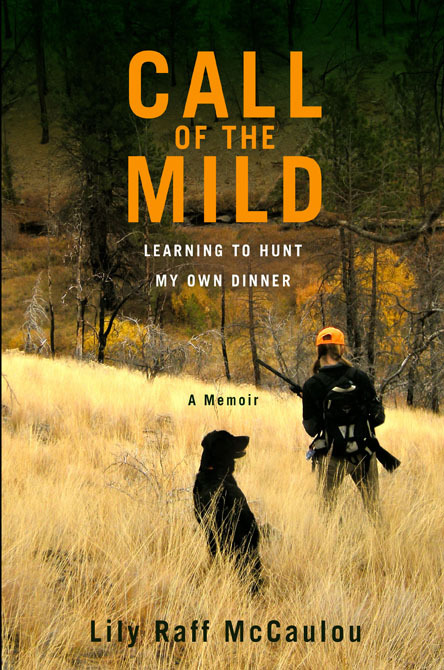Curious about what exactly mountain lion tastes like, or what would make a completely rational city girl from the East Coast stalk the wilds of eastern Oregon with a gun? Well, the books I reviewed for the Eugene Weekly's December 13, 2012 edition answer those questions and more. If you have cleaned and oiled your guns for winter storage after a long fall hunting season, or if you simply hunger for a adventure in your winter reading list, these reads will entertain and get you thinking about the role of hunting in today's world.
...................................................................................................................................................
CALL OF THE MILD: Learning to Hunt My Own Dinner By Lily Raff McCaulou. Grand Central, $24.99.
MEAT EATER: Adventures from the Life of an American Hunter By Steven Rinella. Spiegal and Grau, $26.
The image many non-hunters have of hunters isn’t pretty. Hunters are callous, camo-clad rednecks in big trucks, gun-nuts unconcerned about their prey and the environment in general. There are boorish hunters to be sure. But let’s not forget, Steven Rinella (American Buffalo, The Scavenger’s Guide to Haute Cuisine) tells us, that America’s first conservationists were avid hunters. And — as Lily Raff McCaulou finds to her own amazement — becoming a hunter might make one a better environmentalist. Digging deeper, both agree that hunting has something to tell us about who we are and how we fit in with the world around us.
McCaulou, raised by uber-hippie parents in suburban Maryland, a stone’s throw from Washington, D.C., is the epitome of the clueless urbanite when she ditches the glamour of the New York film industry to take a newspaper job in Bend in 2003. Assigned a rural beat, McCaulou stumbles onto a discovery: Hunters know an awful lot about the places they hunt. What’s more, the hunters she meets evince a profound love for the animals they pursue and nature in general.
...................................................................................................................................................
CALL OF THE MILD: Learning to Hunt My Own Dinner By Lily Raff McCaulou. Grand Central, $24.99.
MEAT EATER: Adventures from the Life of an American Hunter By Steven Rinella. Spiegal and Grau, $26.
The image many non-hunters have of hunters isn’t pretty. Hunters are callous, camo-clad rednecks in big trucks, gun-nuts unconcerned about their prey and the environment in general. There are boorish hunters to be sure. But let’s not forget, Steven Rinella (American Buffalo, The Scavenger’s Guide to Haute Cuisine) tells us, that America’s first conservationists were avid hunters. And — as Lily Raff McCaulou finds to her own amazement — becoming a hunter might make one a better environmentalist. Digging deeper, both agree that hunting has something to tell us about who we are and how we fit in with the world around us.
McCaulou, raised by uber-hippie parents in suburban Maryland, a stone’s throw from Washington, D.C., is the epitome of the clueless urbanite when she ditches the glamour of the New York film industry to take a newspaper job in Bend in 2003. Assigned a rural beat, McCaulou stumbles onto a discovery: Hunters know an awful lot about the places they hunt. What’s more, the hunters she meets evince a profound love for the animals they pursue and nature in general.







